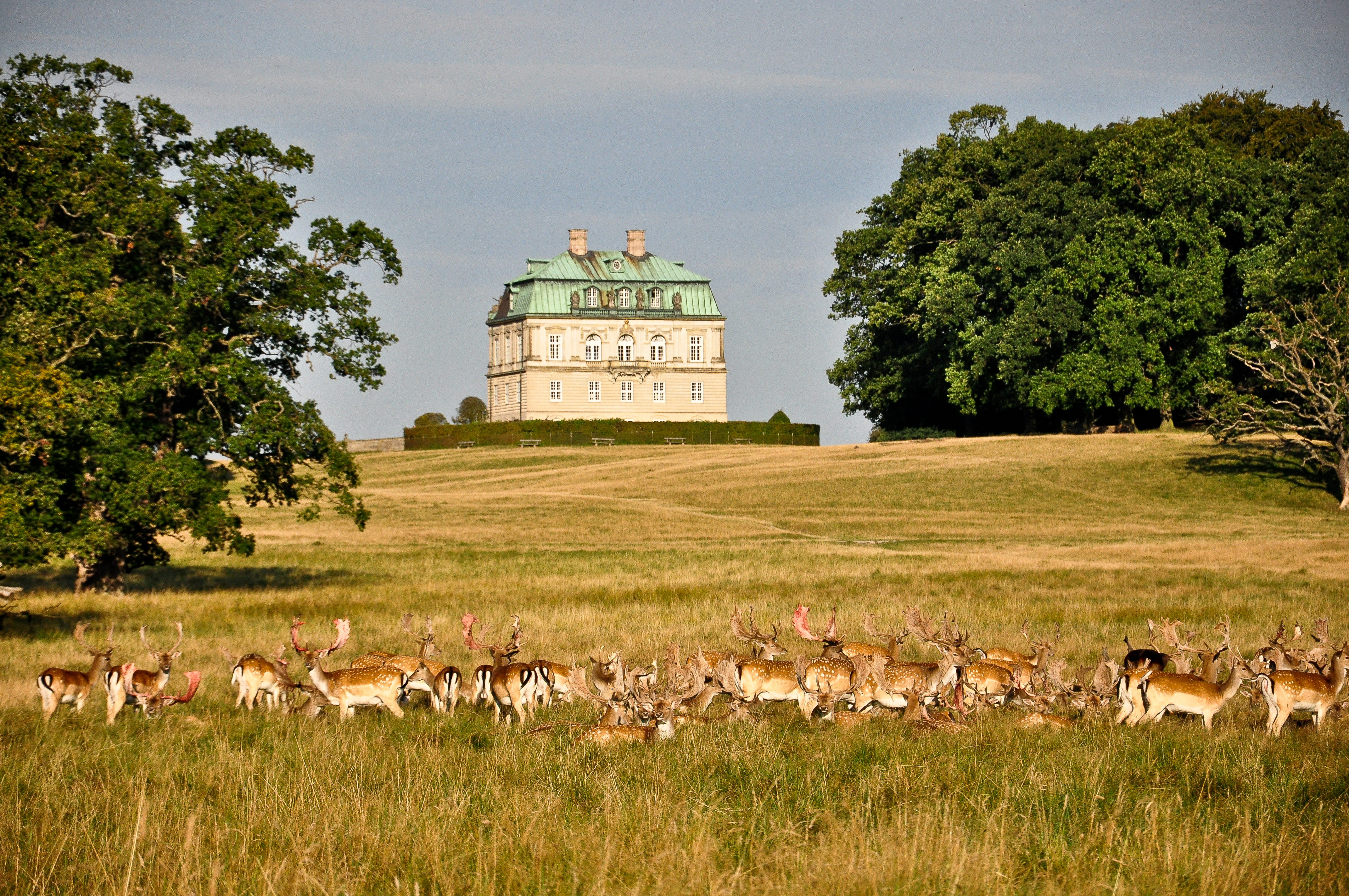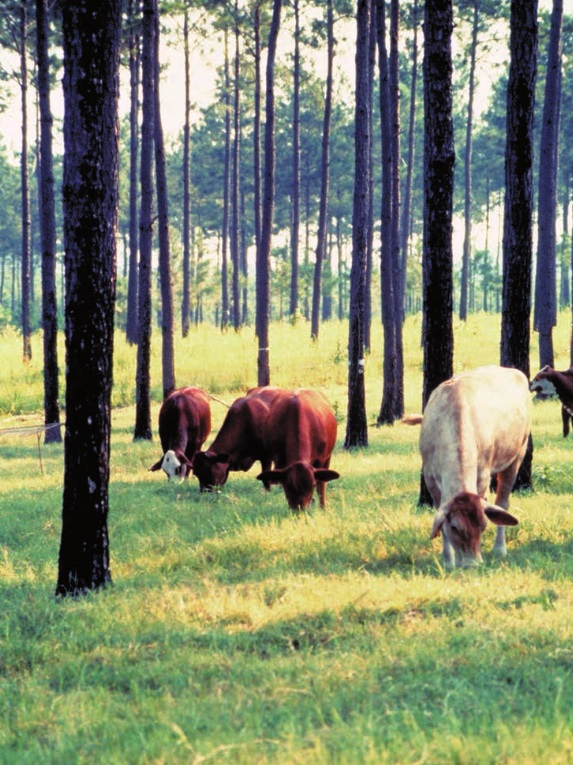|
Gribskov
Gribskov (Grib Forest) is Denmark's fourth largest forest, comprising c. 5,600 ha of woodland situated in northern Zealand, west and south of Lake Esrum. The forest is owned and administered by the State of Denmark, and a part of the Kongernes Nordsjælland National Park. In July 2015, it was one of three forests included in a UNESCO World Heritage Site, the Par force hunting landscape in North Zealand. Gribskov is usually divided into four sections: The northwest surrounding the small village of Maarum, the northeast on the banks of Lake Esrum, the southwest around the small lake of Gribsø and finally the southeast, enclosing the village of Nødebo on the southern banks of Lake Esrum. Only a thin strip of Hillerød town in the south separates Gribskov from many larger woodlands such as Store Dyrehave at 1,100 ha, Tokkekøb Hegn at 631 ha and several smaller woods. Etymology The Danish name Gribskov translates literally as ''Grib forest'' in English. The first part, 'grib' ... [...More Info...] [...Related Items...] OR: [Wikipedia] [Google] [Baidu] |
Hillerød
Hillerød () is a Danish town with a population of 35,357 (1 January 2022)BY3: Population 1. January by urban areas, area and population density The Mobile Statbank from located in the centre of approximately 30 km to the north of , . Hillerød is the |
Par Force Hunting Landscape In North Zealand
The Par force hunting landscape in North Zealand is a collection of hunting grounds and forests north of Copenhagen. The landscape was submitted for admission to the UNESCO List of World Heritage Sites on 1 August 2010 and was inscribed on 4 July 2015. The landscape comprises three main areas: Store Dyrehave, Gribskov and Jægersborg Dyrehave/Jægersborg Hegn, and contains the most significant hunting grounds for the medieval nobility in Denmark. The central-star grid design of the landscape, with numbered roads and stone posts, fences, demonstrates the unique planning and design of hunting landscapes in the 17th and 18th centuries. Location The three forests are all located in the North Zealand peninsula to the north of Copenhagen. Jægersborg Dyrehave with the fenced Jægersborg Hegn is closest to the capital on the peninsula's east coast. The square-shaped Store Dyrehave is located further to the north in the centre of the peninsula while Gribskov, further north still, is adja ... [...More Info...] [...Related Items...] OR: [Wikipedia] [Google] [Baidu] |
Helsinge, Denmark
Helsinge is the municipal seat of Gribskov Municipality in Region Hovedstaden on Zealand in Denmark. As of 1 January 2022, it has a population of 8,616.BY3: Population 1. January by rural and urban areas, area and population density The Mobile Statbank from Statistics Denmark History In early 19th century Helsinge was as small as the nearby s, but it had an inn and a and the |
Nødebo
Nødebo is a village located on the southwestern shores of Lake Esrum in Hillerød Municipality, North Zealand, some 40 km north of Copenhagen, Denmark. Nødebo Church, the oldest in the area, is notable for its church frescos and its early 16th century altarpiece. Nødebo Kro a historic inn, now serves as a community centre and local cultural venue. Nødebo is surrounded by Forest of Grib on three sides. Its par force hunting road well-preserved network was declared a UNESCO World Heritage Site in 2015. The Forest and Landscape College, now part of University of Copenhagen's Department of Geosciences and Natural Resources Management, is located in the northern part of Nødebo. History The village of Nødebo was located in the vast forests north of Frederiksborg Castle. Traditional occupations included charcoal burner, farming and fishing in Lake Esrum. Description Today Nødebo mainly consists of single family detached homes. Facilities include a primary school and ... [...More Info...] [...Related Items...] OR: [Wikipedia] [Google] [Baidu] |
Coppice
Coppicing is a traditional method of woodland management which exploits the capacity of many species of trees to put out new shoots from their stump or roots if cut down. In a coppiced wood, which is called a copse, young tree stems are repeatedly cut down to near ground level, resulting in a stool. New growth emerges, and after a number of years, the coppiced tree is harvested, and the cycle begins anew. Pollarding is a similar process carried out at a higher level on the tree in order to prevent grazing animals from eating new shoots. ''Daisugi'' (台杉, where ''sugi'' refers to Japanese cedar), is a similar Japanese technique. Many silviculture practices involve cutting and regrowth; coppicing has been of significance in many parts of lowland temperate Europe. The widespread and long-term practice of coppicing as a landscape-scale industry is something that remains of special importance in southern England. Many of the English language terms referenced in this article are p ... [...More Info...] [...Related Items...] OR: [Wikipedia] [Google] [Baidu] |
Wood Pasture
Silvopasture (''silva'' is forest in Latin) is the practice of integrating trees, forage, and the grazing of domesticated animals in a mutually beneficial way. It utilizes the principles of managed grazing, and it is one of several distinct forms of agroforestry. Properly managed silvopasture (grazed woodland) can increase overall productivity and long-term income due to the simultaneous production of tree crops, forage, and livestock, and can provide environmental benefits such as carbon sequestration. Silvopasture is one of the oldest known forms of agriculture, and has been practiced in many parts of the world for centuries. Silvopasture is not the same as unmanaged grazing in woodlands, which has many known negative environmental consequences. Benefits Open pasture systems are a result of mass deforestation, generating the loss of carbon storage, decreasing water availability, and increasing soil nutrients to a point that is damaging both to the ecosystem and to humans. A ... [...More Info...] [...Related Items...] OR: [Wikipedia] [Google] [Baidu] |
Beech
Beech (''Fagus'') is a genus of deciduous trees in the family Fagaceae, native to temperate Europe, Asia, and North America. Recent classifications recognize 10 to 13 species in two distinct subgenera, ''Engleriana'' and ''Fagus''. The ''Engleriana'' subgenus is found only in East Asia, distinctive for its low branches, often made up of several major trunks with yellowish bark. The better known ''Fagus'' subgenus beeches are high-branching with tall, stout trunks and smooth silver-grey bark. The European beech ('' Fagus sylvatica'') is the most commonly cultivated. Beeches are monoecious, bearing both male and female flowers on the same plant. The small flowers are unisexual, the female flowers borne in pairs, the male flowers wind-pollinating catkins. They are produced in spring shortly after the new leaves appear. The fruit of the beech tree, known as beechnuts or mast, is found in small burrs that drop from the tree in autumn. They are small, roughly triangular, and edib ... [...More Info...] [...Related Items...] OR: [Wikipedia] [Google] [Baidu] |
Berne Convention On The Conservation Of European Wildlife And Natural Habitats
The Bern Convention on the Conservation of European Wildlife and Natural Habitats, also known as the Bern Convention (or Berne Convention), is a binding international legal instrument in the field of Nature Conservation, it covers the natural heritage in Europe, as well as in some African countries. The Convention was open for signature on 19 September 1979 and came into force on 1 June 1982. It is particularly concerned about protecting natural habitats and endangered species, including migratory species. Aims and objectives The convention has three main aims, which are stated in Article 1:Council of Europe, 1979. Convention on the Conservation of European Wildlife and Natural Heritage. Bern, Switzerland. Available at: http://conventions.coe.int/Treaty/EN/Treaties/Html/104.htm * to conserve wild flora and fauna and their natural habitats * to promote cooperation between states * to give particular attention to endangered and vulnerable species including endangered and vulne ... [...More Info...] [...Related Items...] OR: [Wikipedia] [Google] [Baidu] |
Great Cormorant
The great cormorant (''Phalacrocorax carbo''), known as the black shag in New Zealand and formerly also known as the great black cormorant across the Northern Hemisphere, the black cormorant in Australia, and the large cormorant in India, is a widespread member of the cormorant family of seabirds. The genus name is Latinised Ancient Greek, from φαλακρός (''phalakros'', "bald") and κόραξ (''korax'', "raven"), and ''carbo'' is Latin for " charcoal". It breeds in much of the Old World, Australia, and the Atlantic coast of North America. Taxonomy and etymology The long white-breasted cormorant ''P. c. lucidus'' found in sub-Saharan Africa, has a white neck and breast. It is often treated as a full species, ''Phalacrocorax lucidus'' (e.g. , ). In addition to the Australasian and African forms, ''Phalacrocorax carbo novaehollandiae'' and ''P. c. lucidus'' mentioned above, other geographically distinct subspecies are recognised, including ''P. c. sinensis'' (western ... [...More Info...] [...Related Items...] OR: [Wikipedia] [Google] [Baidu] |
Habitats Directive
The Habitats Directive (more formally known as Council Directive 92/43/EEC on the Conservation of natural habitats and of wild fauna and flora) is a directive adopted by the European Community in 1992 as a response to the Berne Convention. The European Community was reformed as the European Union the following year, but the directive is still recognised. The Habitats Directive required national governments to specify areas that are expected to be ensuring the conservation of flora and fauna species. This led to the setting up of a network of protected areas across the EU, along with ' Special Areas of Conservation', which together with the existing Special Protection Areas, became the so-called Natura 2000 network established to protect species and habitats. This directive is one of the main pillars of the European Union's system of wildlife and nature conservation, another being the Birds Directive. The Habitats Directive, together with the Birds Directive, are also called th ... [...More Info...] [...Related Items...] OR: [Wikipedia] [Google] [Baidu] |
Green Sandpiper
The green sandpiper (''Tringa ochropus'') is a small wader (shorebird) of the Old World. The green sandpiper represents an ancient lineage of the genus ''Tringa''; its only close living relative is the solitary sandpiper (''T. solitaria''). They both have brown wings with little light dots and a delicate but contrasting neck and chest pattern. In addition, both species nest in trees, unlike most other scolopacids. Given its basal position in ''Tringa'', it is fairly unsurprising that suspected cases of hybridisation between this species and the common sandpiper (''A. hypoleucos'') of the sister genus ''Actitis'' have been reported. Taxonomy The green sandpiper was formally described by the Swedish naturalist Carl Linnaeus in 1758 in the tenth edition of his ''Systema Naturae'' under the current binomial name ''Tringa ochropus''. The genus name ''Tringa'' is the New Latin name given to the green sandpiper by Aldrovandus in 1599 based on Ancient Greek ''trungas'', a thrush ... [...More Info...] [...Related Items...] OR: [Wikipedia] [Google] [Baidu] |
Alder
Alders are trees comprising the genus ''Alnus'' in the birch family Betulaceae. The genus comprises about 35 species of monoecious trees and shrubs, a few reaching a large size, distributed throughout the north temperate zone with a few species extending into Central America, as well as the northern and southern Andes. Description With a few exceptions, alders are deciduous, and the leaves are alternate, simple, and serrated. The flowers are catkins with elongate male catkins on the same plant as shorter female catkins, often before leaves appear; they are mainly wind-pollinated, but also visited by bees to a small extent. These trees differ from the birches (''Betula'', another genus in the family) in that the female catkins are woody and do not disintegrate at maturity, opening to release the seeds in a similar manner to many conifer cones. The largest species are red alder (''A. rubra'') on the west coast of North America, and black alder (''A. glutinosa''), native ... [...More Info...] [...Related Items...] OR: [Wikipedia] [Google] [Baidu] |


.jpg)
.jpg)




